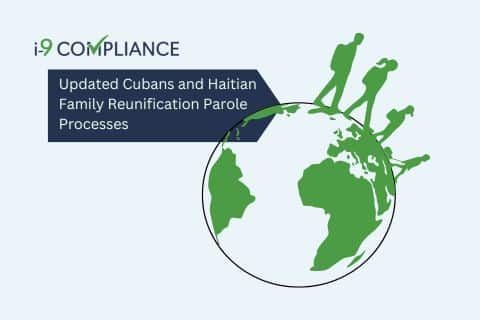DHS Updates Family Reunification Parole for Cubans and Haitians

August 24, 2023
The Department of Homeland Security (DHS) recently published a Federal Register notice concerning a reunification parole program. This notice updates the program for Cuban and Haitian families. This program allows individuals from these countries to become eligible to travel to the United States.
It also allows these individuals to apply for employment authorization documents. These modernized processes will enable petitioners to complete most of the program online. The DHS’s secure online platform ensures that participants avoid excessive travel and paperwork.
Historically, the Cuban and Haitian family reunification parole programs have allowed U.S. citizens and lawful permanent residents to bring their family members into the country. However, these programs have struggled with long wait times and many challenges. These modernized programs aim to make this process more accessible and efficient for participants.
According to the Cuban and Haitian family reunification programs, the Department of State sends invitations to select participating individuals. U.S. citizens and lawful permanent residents must have approved Petitions for Alien Relative (Form I-130) applications to receive an invite.
This invite will go to the family members of these petitioning citizens or residents. These petitioners will initiate the process by filing Form I-134A, an Online Request to be a Supporter, and Declaration of Financial Support. They must do so on behalf of the primary and derivative beneficiary spouses and children.
Beneficiaries will receive an email with instructions on creating an online USCIS account once the agency confirms their Form I-134A. This email also offers additional instructions on how to request parole if necessary. The beneficiaries must verify their biographic information and attest to meeting the criteria for eligibility.
Afterward, the beneficiary will receive instructions on how to complete the process through the CBP One app. Beneficiaries must input biographic and biometric information into the app, including a live facial photograph. In some cases, beneficiaries may receive an electronic advance travel authorization to travel to the United States. Such cases happen only when they establish their eligibility, and the government finds they warrant a favorable exercise of discretion.
From here, the recipient may travel to a point of entry where the beneficiary may receive advance travel authorization. This authorization lasts up to three years. During this period, the individual may become eligible to apply for employment authorization documents to seek employment. The Federal Register notices for Cuba and Haiti have more detailed information on the processes.
Employers will find this process improves their talent pool as they gain access to more job seekers. However, they must remember to fulfill the employment eligibility verification (Form I-9) process when hiring new applicants. This process has proven complex because employees may present a wide range of documentation. Furthermore, employers may need to reverify authorization at intervals of employment.
The best way to help ensure compliance is maintained uniformly is to incorporate an electronic I-9 management tool into the hiring process. This tool can guide employers through every step, providing various features such as digital storage and helpful reminders.
Our I-9 Compliance tool will help quickly verify your employment eligibility automatically.